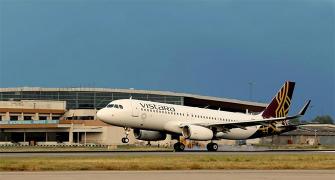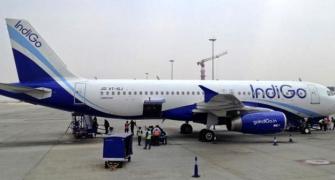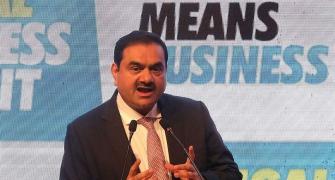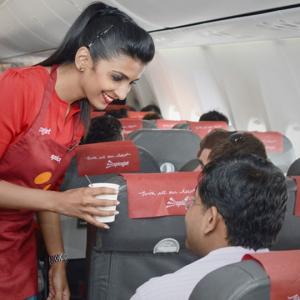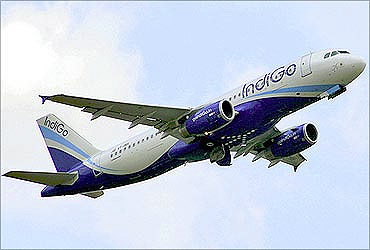 Higher capacity addition without commensurate increase in load factors, fares impact performance
Higher capacity addition without commensurate increase in load factors, fares impact performance
Even as passenger volumes continue to show an upward trajectory, pressure on pricing due to higher competition dented the operating performance in the June 2016 quarter of InterGlobe Aviation, which runs low-cost airline IndiGo.
While passenger volumes were up 20 per cent year-on-year in Q1 to 9.8 million, average fares fell 11 per cent to Rs 4,032.
Consequently, revenues increased 8.7 per cent to Rs 4,545 crore (Rs 45.45 billion) but came lower than the Bloomberg consensus estimate of Rs 4,656 crore (Rs 46.56 billion).
Although passenger volumes have been strong, robust capacity growth dented load factors (an indicator of capacity utilisation), especially in June.
For instance, load factors in April and May were 86-87 per cent but fell to 78 per cent in June, underperforming the sector’s 81 per cent.
The load factor for IndiGo in Q1 stood at 83.3 per cent.
The management had expected capacity addition growth for Q1 denoted, by available seat kilometre, of 23 per cent; it achieved 25 per cent. Passenger growth (20 per cent) thus has been lower than capacity growth.
The overall market share continues to be steady, at 38 per cent.
The company has indicated it is looking to slow down the procurement of A320neo aircraft to allow engine supplier Pratt & Whitney to catch up on the production of upgraded engines, while saying it expected a capacity increase of 25 per cent in the September quarter.
Additionally, a 17 per cent surge in non-fuel costs (excluding depreciation) impacted performance.
While fuel costs, the single biggest cost item (Rs 1,367 crore), were down 212 basis points, as a percentage of sales to 30 per cent, rentals and other expenses are up 200-300 bps as a percentage of sales. They constitute 15-16 per cent each of sales.
Rupee depreciation, one-time costs such as ESOPs as well as a write-off (higher interest costs) were the key culprits.
Thus, margins were down 600 bps to 17.7 per cent. Excluding rentals, margins came in at 33 per cent, down 400 bps year-on-year.
The company said lower profitability compared to the year-ago period was due to competitive fare pressure.
Competitive fare pressures also hurt IndiGo’s performance.
The company did not match competition on fares in certain routes (impacting loads) but indicated they would rethink this strategy.
Given lower loads, this could lead to some pressure on yields.
IndiGo, however, said it would add capacity profitably.
Thus, net profit at Rs 591 crore (Rs 5.91 billion) was down 7.4 per cent year-on-year.
Had it not been for a 46 per cent jump in other income to Rs 162 crore (Rs 1.62 billion), as well as lower taxes (down 45 per cent to Rs 155 crore or Rs 1.55 billion), net profit would have been much lower.
The fare pressures are expected to continue over the next couple of months, before the sector gets into the busy season. Which should support pricing and, therefore, profitability.


